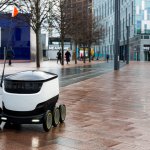
ML can intelligently forecast the likelihood of someone performing an act that is high risk and ping to provide protection automatically. Source: Shutterstock
AI as a standalone service will be a missed opportunity says Tune Protect
MACHINE learning is growing to become the go-to customer-facing solution.
As digitization enables greater competition across industries, the demand for more personalized customer experience (CX) is also on the rise.
However, a tailored CX can be both challenging and time-consuming. Machine learning (ML), therefore, seems to be the next generation of technology for the customer service role.
Tune Protect Group CDMO Loh Ben Jern strongly believes in that notion.
Loh shared with Tech Wire Asia that artificial intelligence (AI) will no longer be sufficient on its own.
According to global market research, the machine-learning-as-a-service (MLaaS) market will go over US$7.6 billion by 2023.
This is to say that ML will be making even bigger strides in the business world than it already is.
As the technology can detect intent as well as accurately predict what comes next, businesses will be ever-ready to serve its customers.
“AI as a standalone service will be a missed opportunity,” Loh said this while explaining the AI conundrum.
Since the technology is evolving rapidly, datasets from just five years ago may not be relevant today.
So, feeding AI with dated datasets will not be as useful for the business when compared to ML.
Is artificial intelligence not enough?
AI (in the commercial space) enables tasks to be automated but its responses will differ depending on situations.
So, an AI-enabled customer service component can be a chatbot where businesses can feed it with pre-written scripts.
On the other hand, ML (part of the broader AI family), is more specific and agile. This means that an ML-enabled solution can both process data as well as learn on its own without human supervision.
In the space of customer service, the solution will be able to think for itself and manage the customer service delivery on its own.
Not only will this save businesses the time and effort to train customer service personnel but also reduce manpower expenditure.
More importantly, data captured by AI can help machines learn and understand customers in-depth.
As a result, CX will be propelled forward.
For example, within the context of insurance, ML can intelligently forecast the likelihood of someone performing an act that is high risk and ping to provide protection automatically.
In other words, ML can make the value-added service flow more coherently with customers’ lifestyles without being intrusive.
The time for machine learning is now
ML can potentially make everything easier. There’s a famous quote that explains this simply.
“Give a man a fish, and you feed him for a day. Teach a man to fish, and you feed him for a lifetime.”
So, ML-enabled solutions will be able to learn on their own to fulfill their given goals. Though, like all learning processes, this too will take time.
According to Loh, even if companies don’t already have data to train ML algorithms, they should start collecting data now — because this data will be the one that’s most impactful.
Data from five years ago doesn’t capture customer intent and expectations as concisely as current data does, argues Loh. If you don’t have historical data, forget it and focus on what you can do going forward.
“The clock has started, and the sooner you start, the sooner you win,” explained Loh.
So, the key is to feed the automation system data that is relevant instead of just information in large volumes.
This is why ML will be the most suitable customer-facing solution hereon as it will evolve together with customer needs and wants.
Both AI and ML are valuable business tools that can improve CX.
One is simpler whereas the other enables ongoing learning that will safeguard a place for the business in the future.
In the end, it depends on which tool the business needs to win customers at that very point in time.
READ MORE
- Ethical AI: The renewed importance of safeguarding data and customer privacy in Generative AI applications
- How Japan balances AI-driven opportunities with cybersecurity needs
- Deploying SASE: Benchmarking your approach
- Insurance everywhere all at once: the digital transformation of the APAC insurance industry
- Google parent Alphabet eyes HubSpot: A potential acquisition shaping the future of CRM








